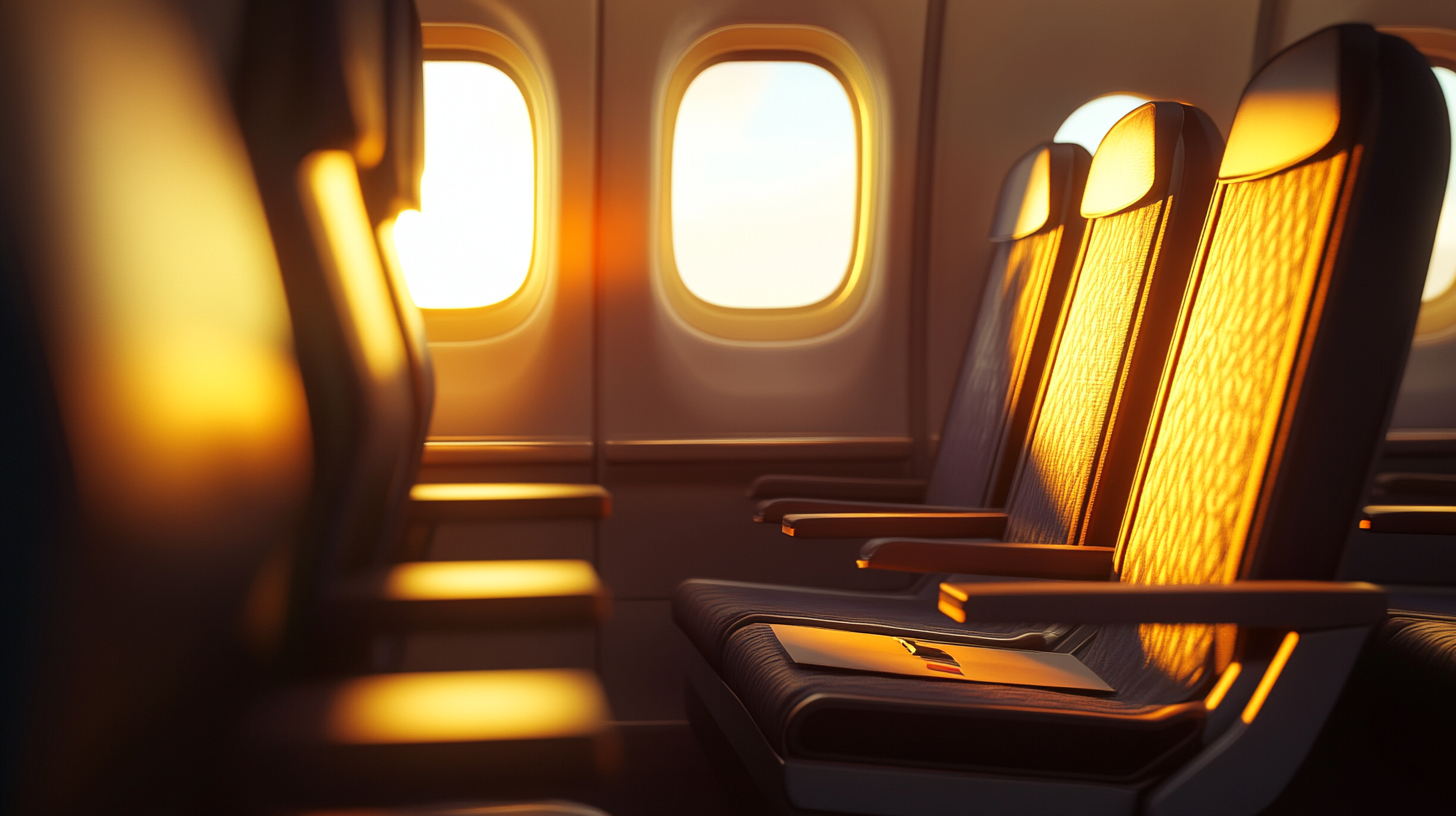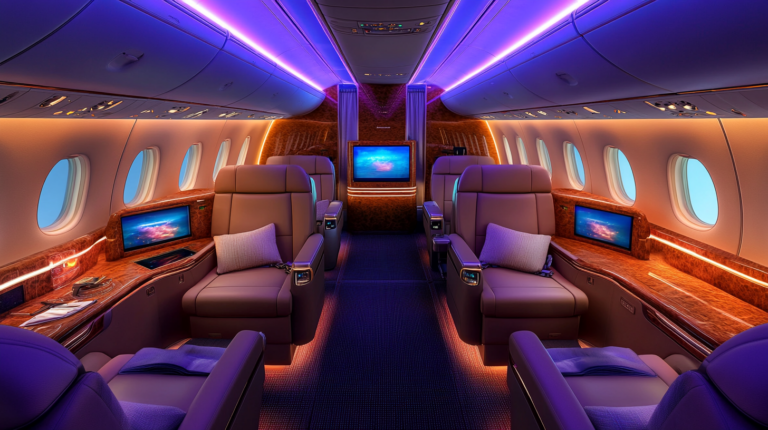Exit Row Seats: The Best Economy Upgrade?
I’ve always believed that economy travel doesn’t have to feel like a cramped sardine can. Over the years, I’ve watched airlines tweak their cabin layouts, sometimes shaving off inches of precious legroom. In 2025, exit row seats are even more coveted than ever, promising a more pleasant ride for tall flyers, frequent globetrotters, or anyone hoping to escape that dreaded knee-crunch. However, there’s still a lot to unpack when it comes to fees, eligibility, and the ever-present fine print.
Why Choose an Exit Row?

In my own travels, exit row seats have constantly proven their worth in providing that extra bit of breathing room that can turn an uncomfortable journey into a bearable—dare I say, even enjoyable—flight. Standing at six feet tall, I’ve bumped my knees on tray tables one too many times. So whenever I get the chance, I gladly book an exit row for the added pitch, which can range from about 34 inches to 36 inches, depending on the airline. According to industry data from 2024, a full 60% of travelers who specifically request exit row seats do so primarily for legroom perks.
But legroom isn’t the only draw. I’ve found that exit rows often give you a more open view of the cabin and can limit the claustrophobic sensation common in standard economy seats. Even if you’re not particularly tall, stretching out your legs during a multi-hour flight can help reduce fatigue and cramps, leading to a smoother landing. I once watched a passenger on a transatlantic flight do quick calf stretches right in front of the exit row door—something unthinkable in the narrower aisles of standard seating.
Of course, there’s also a natural sense of reassurance in being near an exit. I’ve noticed that some travelers simply feel more at ease knowing they can be among the first to exit in an emergency situation. Personally, I appreciate the quiet confidence it provides, especially on longer international flights. It’s a subtle peace of mind that can make a world of difference.
The Trade-Offs
Despite the perks, I’ve seen plenty of travelers sigh in frustration when they realize their exit row seat refuses to recline. Some airlines design these rows with a fixed back, or they’re placed in a spot where reclining isn’t possible due to safety considerations. For a while, I used to avoid certain exit row seats for overnight flights, because a rigid back can turn a red-eye into a bleary-eyed morning.
Another factor I’ve observed is the proximity to lavatories or galleys. On some aircraft configurations, exit row seats are located near the plane’s busiest spots, which means you might exchange a slice of legroom for extra foot traffic, bright lights, or even the occasional line of chatty passengers waiting for their turn in the restroom. It might not bother some folks, but if you’re a light sleeper like me, it can be a real headache.
Adding to the list of inconveniences is storage. Many airlines require that all personal items be kept in overhead bins during takeoff and landing if you’re seated in an exit row. In my experience, that adds a bit of stress—especially if you’re hauling a laptop or other devices you’d prefer to keep at your feet. If you value easy access to your carry-ons, it might be worth thinking twice before paying extra for a seat with no under-seat storage.
The Delta Comfort Comparison
Over the years, I’ve experienced both Delta’s Comfort Plus and their exit row seats on multiple domestic and international routes. Comfort Plus comes with a few extra inches of legroom, complimentary drinks, premium snacks, and early boarding perks. According to a 2023 airline satisfaction survey, Delta’s Comfort Plus ranks among the top three premium economy products across major U.S. carriers.
That said, I’ve noticed the exit row can offer even more generous legroom than Comfort Plus on certain aircraft, particularly wide-bodies like the Airbus A350. But sometimes those exit row seats are narrower, come with immovable armrests, or feature tray tables stowed in the armrest instead of the seat in front. This might limit your hip space and can make the seat feel slightly confining, even if you can stretch your legs further.
From an upgrade standpoint, the choice usually boils down to personal preference. I’ve had fellow passengers tell me they’d rather have a few extra inches of recline and a guaranteed overhead bin spot than an abundance of legroom with fewer frills. If you’re taking a red-eye or a longer flight, Comfort Plus might hit the sweet spot for comfort. If you’re all about that legroom and don’t mind a bit of compromise on width or amenities, the exit row is your best bet.
Rules and Requirements to Note
Regulatory standards make it crystal clear that not everyone can occupy an exit row seat. The Federal Aviation Administration (FAA) mandates that these seats be reserved for passengers who can physically assist in an emergency. For instance, you’ve got to be at least 15 years old, fluent in English, and capable of lifting and placing the exit door aside if the situation calls for it. I once witnessed a gate agent reassign a seat to a passenger with a shoulder injury because they couldn’t reliably operate the exit if needed.
According to FAA guidelines updated in late 2024, individuals who need a seat belt extender, have mobility constraints, or are traveling with pets in the cabin won’t be allowed to occupy an exit row. I’ve personally seen flight attendants discreetly but firmly ask families with young children to switch seats. It might feel a bit inconvenient at first, but those requirements exist for everyone’s safety.
Before finalizing your booking, be sure to read your airline’s specific rules, because carriers like United or JetBlue might have additional or slightly different policies. These details can make or break your travel experience, and as I always say, there’s nothing worse than finding out at the last minute that your coveted exit row seat is off-limits. So do a quick double-check and avoid any awkward pre-flight surprises.
Booking Strategies and Fees
When it comes to scoring an exit row seat, timing and status often reign supreme. Elite flyers sometimes snag these coveted spots at no extra cost, or at least at a generous discount, thanks to their airline loyalty programs. But if you’re not riding the elite wave, be prepared to shell out a bit more. I’ve seen fees range from around $20 for short domestic hops to well over $100 for long-haul international flights, depending on the airline and booking window.
Comparing fees is crucial. A recent study suggests that while some carriers charge a flat rate for exit row upgrades, others use dynamic pricing based on flight demand and route popularity. If you’re able to plan well in advance, you can often shop around or track seat availability using online tools like ExpertFlyer or direct airline apps. On a cross-country flight last year, I managed to secure an exit row seat for half the usual price by monitoring the airline’s website daily and pouncing when the fee dropped.
My strategy typically involves booking early, taking a detailed look at the seat map—websites like SeatGuru can be really handy—and verifying whether the seat reclines or has limited storage. If you’re traveling solo, it might be easier to gamble on a last-minute seat switch or upgrade at check-in. But if you’re part of a group, planning ahead and comparing upgrade costs is your best bet. After all, you don’t want to break the bank just to stretch your legs, but sometimes a small splurge can pay off in comfort, especially on longer journeys.
The Bottom Line
Exit row seats can transform a cramped flight into a more peaceful and pleasurable journey—even a short haul can feel less stressful when you’re not fighting for knee space. The downside is that these perks often come with added costs, specific eligibility rules, and a few unpredictable factors like noise or limited recline. Still, for travelers who value legroom above all else, an exit row can be a genuine game-changer.
Every airline handles exit rows a bit differently, so it pays to do your homework. Properly evaluating things like seat width, recline, proximity to the lav, and fees ensures you’re making the right call. In my book, the trick is balancing your personal comfort preferences against your budget and itinerary—exit row luxury doesn’t have to break the bank.
Final Thoughts
When all is said and done, booking an exit row seat is about more than just extra inches. It’s a strategic decision that can drastically improve your travel experience if done right. You’ll want to weigh the potential perks of added legroom against the limitations of a fixed seatback, limited storage, and possibly higher noise levels.
As the aviation industry evolves, so do aircraft seating configurations. Keeping an eye out for new aircraft models on your go-to routes can be a real advantage. Some newer planes offer improved design features in the exit row, such as better recline or cleverly integrated storage solutions. Staying informed helps you pick a seat that best matches your comfort needs and travel style.
In 2025, we have more airline choices than ever, which means more opportunities to find a sweet spot where legroom, price, and convenience align. A little planning, ongoing research, and a willingness to check out seat maps in detail can go a long way in ensuring you make every mile count.
Barry B.’s Take
From my perspective, exit row seats represent an intersection of practicality and peace of mind. Sure, you have to sacrifice storage and accept some safety responsibilities, but for many of us, the extra legroom is often worth the trade-off—especially on longer flights.
I enjoy the subtle shift in atmosphere near the exits; there’s a sense of calm that helps me stay productive or simply catch up on my playlists. If you’re up for a bit of added responsibility in exchange for serious comfort, the exit row might just become your new favorite spot in the sky.
For more entertaining travel insights, visit milesBUZZ today.







